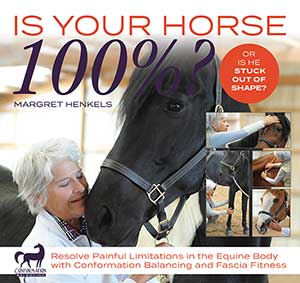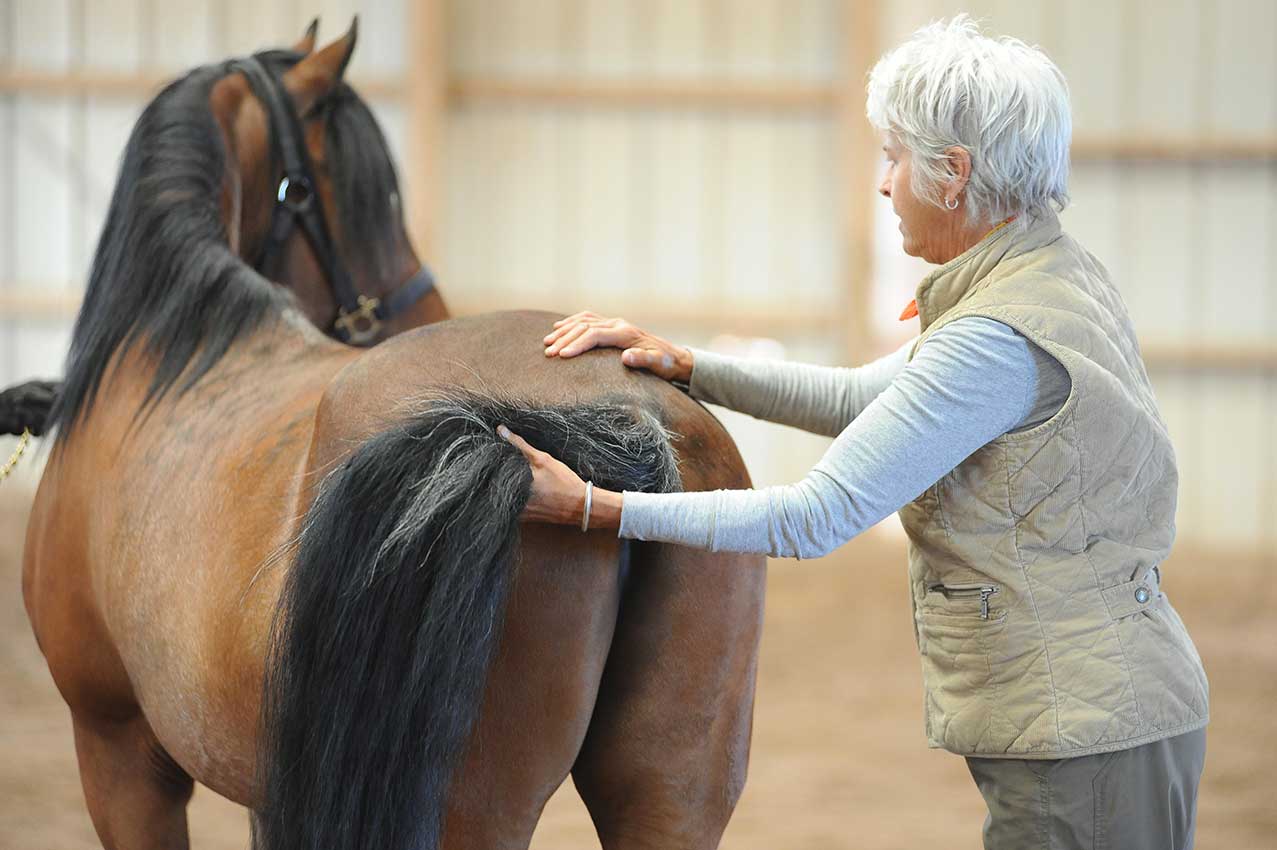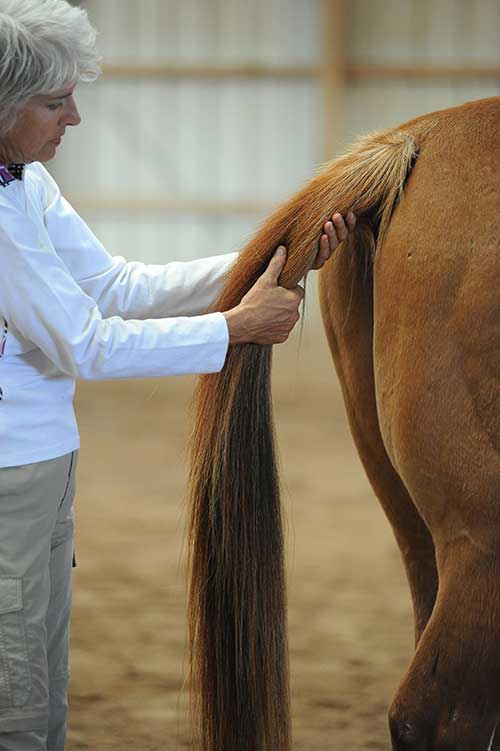
by Margret Henkels
The tail is a major part of the hindquarters puzzle. When you first handle it, the tail seems to have little muscle, yet it is essential to freedom of movement for the horse’s hindquarters. Tail releases for stiff tail vertebrae are wonderful paths to hindquarters progress. It’s a miraculous change for such a huge dense area of muscle through a small, easy-to-handle part of the horse. An expressive tail is easy to notice.
The tail is the horse’s coccyx. As you know, it’s a painful injury when you fall on your tailbone. The horse uses his tail to balance. The tail is kept fluid by movement. Wild horses move a distance of at least 50 miles a day over varied terrain. A much more “sedentary” lifestyle means the horse’s tail becomes less flexible: it loses articulation of the vertebrae.
Many tails are like broomsticks: they are stiff, unable to bend laterally, or curve upward. Very few tails are able to curl back to touch the croup, as they would if flexible. In most cases, the horse’s tail can bend laterally somewhat and, perhaps, curl halfway up toward his croup, but that is all he can allow. Many horses are concerned when you begin to handle their tail at all.
Complete release of the tail is vital to improving self-carriage and collection. You can’t spend too much time releasing a tail. Short opportunities bring good results, even when the horse snacks, or when we spend time companionably. The horse loves this kind of bodywork.
Tail Lifts and Holding the Tail
Slowly lift the tail, curving it toward the croup. You stand to the side of the horse and not behind him. The range of lift increases with practice. Three lifts are helpful. Hold it up as long as the horse’s eye agrees he likes it. Sometimes this can last for a minute. After lifting, hold the tail between your hands, letting your skin contact the horse’s skin as much as possible. Heat goes through the tail hair.
In minutes, this astonishingly simple key to hindquarters freedom brings an additional gain as the horse is again able to plume his tail in freedom. As you hold the tail, the head and poll are also balancing, since all areas are connected by the internet of fascia. Many surprising hindquarters changes are accelerated by tail changes, including change in the entire sacral/lumbar area. Tail work is a very beneficial, regular routine for hindquarters maintenance.


Tail Rotations
Gently rotate the tail three times in each direction. This is a good pre-ride exercise. As the horse permits, gently raise it to a vertical. Notice whether the vertebrae can articulate or if they are rigid, and whether sections of the tail lack flexibility. The more time spent to gently release the tail, the more freedom you create for the entire sacral area.
Tail Pull
You can include the tail pull immediately, if the horse likes it. The tail pull is another excellent pre-ride stretch. Here, you stand behind the horse, making sure you can see one of his eyes, and hold the tail in your hands, but not wrapped around your hand. Slowly lean back until your full weight is pulling against the horse. The horse often angles himself for the best stretch.
This excerpt from Is Your Horse 100%? by Margret Henkels is reprinted with permission from Trafalgar Square Books (www.HorseandRiderBooks.com).
Find more informative articles in our section on Health & Education.

































